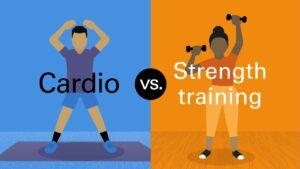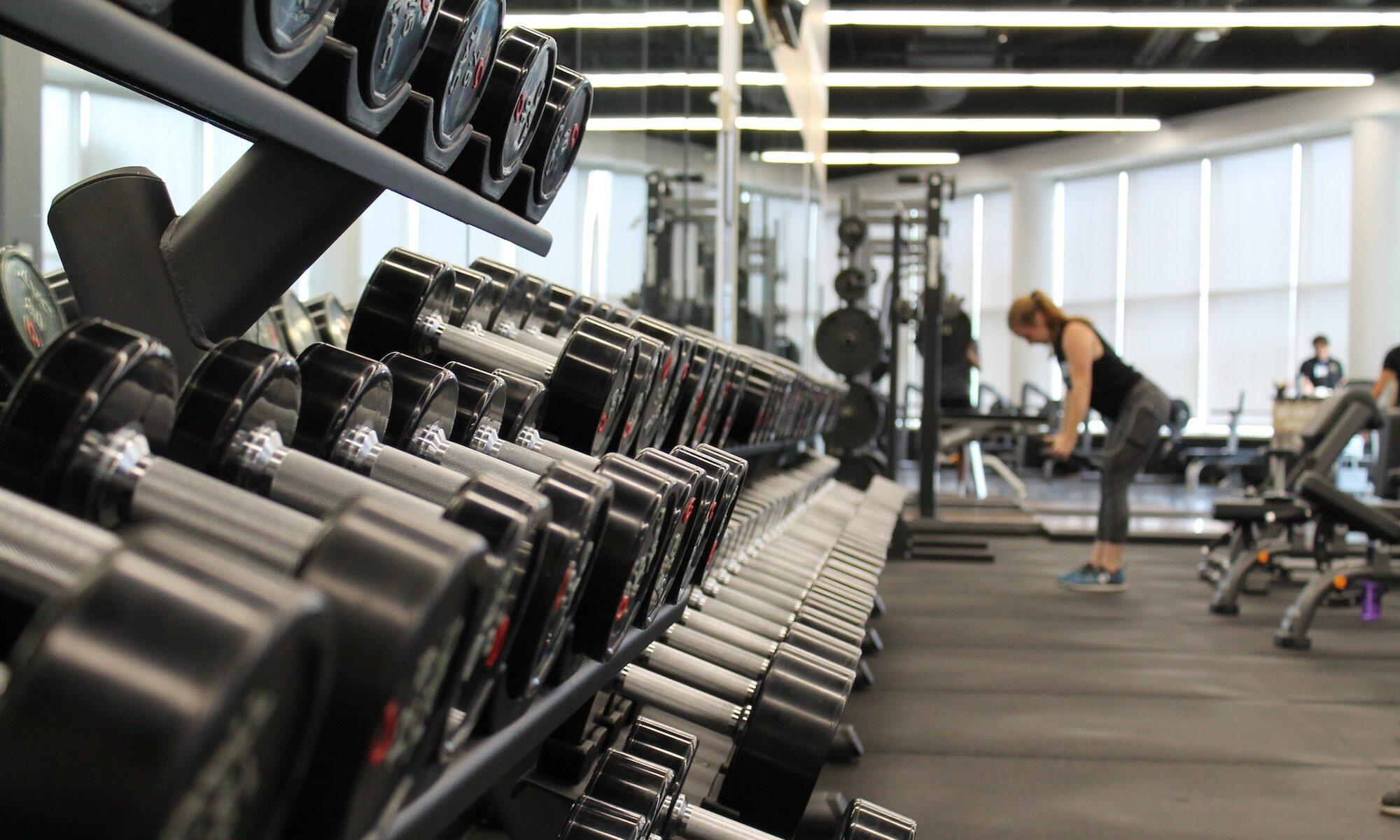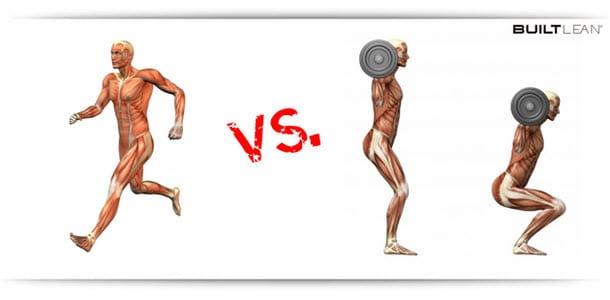Greetings, Devotees of Dynamic Health! In an adventurous shift of scenery, we depart from the consistency of our well-regulated gym environments to embrace the exhilarating unpredictability of nature’s grand stage. Our compass points us towards the boundless realm of outdoor exercise, investigating its transformative advantages, and guiding you on how to venture into this revitalizing realm. Shall we begin our journey under the open sky, absorbing the fresh breezes, relishing a dab of sunshine, and uncovering an innovative method to fortify our inner champions? Continue reading “The Benefits of Outdoor Workouts and How to Get Started”
Pushing the Limit: How to Spot Overtraining and Keep It at Bay
Greetings, Warriors of the Wellness Battlefield! We’ve bathed in the pure exhilaration, the intoxicating euphoria that spills forth from conquering a new personal zenith, or prevailing against an arduous, sweat-soaked training session. And yet, the line that separates the noble pursuit of the limits of our physical prowess from a dangerous, self-imposed affliction is thin and elusive. So today, we delve, with earnest hearts and open minds, into an all-too-neglected topic: overtraining. Its manifestations, its root causes, and, crucially, how to steer clear of its insidious grasp. Settle into your favorite chair with a refreshing glass of your beloved post-workout concoction and join us on this enlightening sojourn into the heart of fitness. Continue reading “Pushing the Limit: How to Spot Overtraining and Keep It at Bay”
A Spotlight on Michael Phelps: Training and Diet of a Champion Swimmer
In our Fitness Warrior Nation Athlete Spotlight series, it’s time to plunge into the pool with Michael Phelps, the most decorated Olympian of all time. Known for his powerful strokes and unwavering commitment to his craft, Phelps’ training regimen and dietary habits have left many in awe and have undeniably contributed to his astounding success. In this article, we are set to dissect the elements of Phelps’ preparation, revealing the details of his grueling training routine and the diet that fuels his champion performances. Continue reading “A Spotlight on Michael Phelps: Training and Diet of a Champion Swimmer”
Exploring Tabata Workouts: What It Is and Who It’s For
Greetings, esteemed comrades of physical prowess! Today, brace yourselves as we embark on a thrilling odyssey into the exhilarating realm of Tabata workouts. Prepare for an electrifying surge of energy as we delve deep into the heart of this phenomenon, promising maximum gains in the most minuscule of timeframes. Secure a towel, for perspiration shall pour forth like a tempest, as we dissect the enigma that is Tabata and identify its ideal recipients. Continue reading “Exploring Tabata Workouts: What It Is and Who It’s For”
Perfecting Your Running Technique for Better Performance
Hey there, esteemed members of the Fitness Warrior Nation! Today, we embark on an exhilarating journey, donning our finest running shoes, as we delve into the intricacies of a paramount facet of our fitness expedition—running technique. Is running truly as straightforward as it seems? Merely lace-up and proceed? Well, while it may not be entirely incorrect, optimizing the manner in which we engage in this activity can unlock a boundless realm of unparalleled performance and sheer enjoyment. Thus, let us submerge ourselves in the captivating domain of biomechanics and flawlessly refine our running technique to achieve an unrivaled level of performance. Continue reading “Perfecting Your Running Technique for Better Performance”
Making the Most of Your Gym Membership: Must-Try Machines and How to Use Them
Maximizing Your Gym Membership: Key Machines and How to Utilize Them Stepping into a gym can sometimes feel like boarding a spacecraft for the first time – a myriad of complex equipment, each with its distinct function. As part of the Fitness Warrior Nation, we understand that harnessing these machines is an integral part of our fitness journey. So, let’s unleash the full potential of your gym membership by identifying the key machines to try and mastering the optimal ways to use them. Continue reading “Making the Most of Your Gym Membership: Must-Try Machines and How to Use Them”
Cardio vs. Weights: The Benefits of Both and How to Balance Them
Are you looking to ignite your fitness routine and achieve optimal results? Look no further than the combination of cardio and weights. In this article, we will explore the benefits of incorporating both forms of exercise into your workout routine and guide you on how to strike the perfect balance between the two. Say goodbye to the endless debate of cardio versus weights, because we’re here to show you that the real magic lies in finding harmony between them. So let’s dive in and discover how you can elevate your fitness journey to new heights!
Cardiovascular Exercise
Cardiovascular exercise, also known as cardio, refers to any form of physical activity that elevates your heart rate and promotes the health of your cardiovascular system. There are various types of cardio exercises, including running, cycling, swimming, dancing, and aerobics. Engaging in regular cardiovascular exercise brings a multitude of benefits for your overall health and well-being.
Benefits for Overall Health
Participating in regular cardiovascular exercise offers numerous benefits for your overall health. It helps to improve lung capacity and oxygen delivery to your muscles, making everyday activities feel less tiring. Cardio also aids in maintaining a healthy weight, reducing the risk of obesity and related health issues such as heart disease, diabetes, and certain types of cancer. Furthermore, cardio exercise strengthens your immune system, leading to fewer instances of illness and faster recovery times.
Improvement in Heart Health
One of the key benefits of cardio exercise is the improvement it brings to your heart health. Engaging in regular cardio workouts strengthens your heart muscle, making it more efficient at pumping blood throughout your body. This efficiency leads to a lower resting heart rate and improved circulation, reducing the risk of heart disease, high blood pressure, and stroke.
Weight Loss and Calorie Burn
If weight loss is one of your goals, cardio exercise can be a valuable tool in your journey. Cardio workouts burn a significant number of calories, helping you create a calorie deficit necessary for weight loss. Whether you choose to go for a run, jump rope, or attend a high-intensity interval training (HIIT) class, the consistent calorie burn during cardio exercises can contribute to shedding excess pounds and achieving a leaner physique.
Reduced Risk of Chronic Diseases
Regular participation in cardio exercises has been shown to lower the risk of chronic diseases. Studies have found that engaging in moderate-intensity cardio activities, such as brisk walking or cycling, can help prevent conditions like type 2 diabetes, certain types of cancer, and osteoporosis. Additionally, cardio exercise can improve insulin sensitivity, reduce inflammation in the body, and lower cholesterol levels, all of which contribute to a decreased risk of chronic diseases.
Strength Training
Strength training, also known as resistance training or weightlifting, involves using resistance to build and tone your muscles. This type of exercise focuses on challenging your muscles against an external force, such as dumbbells, resistance bands, or your body weight. Incorporating strength training into your fitness routine brings a range of benefits, from muscle building and toning to increased metabolism and improved bone density.
Muscle Building and Toning
One of the primary benefits of strength training is its ability to build and tone your muscles. When you lift weights or engage in resistance exercises, you create micro-tears in your muscle fibers. As your body repairs these tears, the muscles become stronger and more defined. By consistently challenging your muscles through strength training, you can achieve a lean and toned physique.
Increased Metabolism
Strength training plays a crucial role in boosting your metabolism. Muscles are metabolically active tissue, meaning they burn more calories at rest compared to fat. By increasing your muscle mass through strength training, you can raise your basal metabolic rate (BMR) and burn more calories even when you’re not engaging in physical activity. This increase in metabolism can be particularly beneficial for weight management and achieving a healthy body composition.
Improved Bone Density
Strength training is recognized as an effective way to improve bone density, reducing the risk of osteoporosis and osteoarthritis. As you engage in resistance exercises, your bones adapt to the stress by becoming denser and stronger. This is especially important as you age, as bone loss and decreased bone density become more prominent. Adding strength training to your fitness routine can help maintain and enhance your bone health, promoting overall longevity and quality of life.
Prevention of Injuries
Strength training not only improves your muscle strength and stability but also enhances the integrity of your connective tissues, tendons, and ligaments. This, in turn, can help prevent injuries by providing greater support to your joints and improving their range of motion. A balanced strength training program that targets major muscle groups and focuses on proper form and technique can be highly effective in reducing the risk of injuries, particularly in activities involving repetitive movements or high impact.
Cardio vs. Weights: Debunking the Myths
There are several common myths surrounding the comparison of cardio and weights. Let’s explore and debunk some of these misconceptions:
Myth: Cardio is the only way to lose weight
While cardio exercises can significantly contribute to weight loss by burning calories, it’s important to note that weight loss ultimately depends on creating a calorie deficit. Strength training plays a crucial role in this process, as it helps build muscle mass. Increased muscle mass leads to a higher metabolic rate, allowing your body to burn more calories even at rest.
Myth: Weights make women bulky
One of the biggest misconceptions about strength training, especially among women, is the fear of getting bulky. However, it’s essential to understand that building significant muscle mass requires specific training techniques, nutrition, and often, genetic predisposition. For most women, strength training leads to a lean and toned physique rather than excessive bulkiness.
Myth: Cardio is enough for heart health
Cardiovascular exercise undoubtedly benefits heart health and is an important component of a well-rounded fitness routine. However, incorporating strength training into your regimen can provide additional cardiovascular benefits. Engaging in resistance exercises challenges your heart and can lead to improvements in cardiovascular endurance and overall heart health.
Myth: Weights make you slow and less agile
Strength training can actually enhance your speed and agility. By improving your muscular strength, you can generate more force and power in your movements, enabling you to run faster, jump higher, and react quicker. Additionally, strength training helps to improve your balance and stability, reducing the risk of falls or other accidents.
Myth: Cardio is better for stress relief
While cardio exercises like running or dancing can provide stress relief by releasing endorphins, strength training shouldn’t be ignored in this aspect. Lifting weights and engaging in resistance exercises can offer a sense of empowerment, boost self-confidence, and act as a healthy outlet for stress and anxiety. Plus, the physical benefits gained from strength training can have a positive impact on overall mental well-being.
Finding the Perfect Balance
To find the perfect balance between cardio and strength training, it’s important to consider various factors, such as your goals, body’s needs, scheduling, and listening to your body’s signals.
Determining Your Goals
Start by determining your fitness goals. Are you looking to lose weight, build muscle, improve endurance, or enhance overall fitness? Understanding your goals will help guide your decision-making when it comes to designing your workout routine.
Understanding Your Body’s Needs
Every individual’s body is unique, and it’s essential to understand what your body needs. Consider factors such as your current fitness level, any existing health conditions, and possible limitations or injuries. Consulting with a fitness professional or healthcare provider can provide valuable insights into tailoring your workout routine to suit your individual needs.
Scheduling Your Workout Routine
Finding the right balance between cardio and strength training also involves planning and scheduling your workout routine effectively. Analyze your daily or weekly schedule and consider the time and energy levels you have available for exercise. Aim for consistency by finding a schedule that works for you and incorporating both cardio and strength training sessions.
Incorporating Cardio and Weights
It’s important to incorporate both cardio and strength training into your workout routine to reap the maximum benefits. Depending on your goals, you can choose to alternate between cardio and strength training on different days or combine them within the same session. It’s recommended to aim for a minimum of 150 minutes of moderate-intensity cardio or 75 minutes of vigorous-intensity cardio per week, along with at least two days of strength training targeting major muscle groups.
Listening to Your Body
Lastly, listen to your body and pay attention to how you feel during and after your workouts. If you’re experiencing excessive fatigue, soreness, or pain, it may be a sign that you need to adjust your routine or incorporate more rest days. Always prioritize proper form and technique to avoid injuries and make modifications as necessary.

Designing Your Cardio Workout
When designing your cardio workout, consider the following factors to make it effective and enjoyable:
Choosing the Right Cardio Exercises
Select cardio exercises that align with your preferences, goals, and fitness level. Consider activities such as running, cycling, swimming, dancing, or trying out fitness classes. Variety can be key to keeping your cardio workouts fresh and preventing boredom.
Setting Intensity and Duration
The intensity and duration of your cardio workouts will depend on your fitness level and goals. Beginners may start with lower-intensity exercises and gradually increase both intensity and duration over time. High-intensity interval training (HIIT) can be an excellent option for those seeking a time-efficient and challenging cardio workout.
Tips for Effective Cardio Workouts
To make your cardio workouts more effective, set specific goals, such as increasing your distance, improving your pace, or reaching a certain heart rate zone. Incorporate interval training to boost intensity and burn more calories. Monitor your heart rate during cardio sessions using a heart rate monitor or by checking your pulse manually.
Mixing Different Cardio Activities
One way to keep your cardio routine exciting is by mixing different activities. This not only provides variety but also challenges your body in different ways. For example, you can alternate between running, cycling, and swimming throughout the week or even try out new workout classes or sports.
Monitoring Progress and Adjusting
Monitor your progress regularly by tracking your workouts, noting improvements in strength, endurance, or speed, and adjusting your routine accordingly. Gradually increase the intensity or duration of your cardio workouts to continue challenging your body and making progress towards your goals.
Developing Your Strength Training Plan
Consider the following factors when developing your strength training plan for optimal results:
Determining Muscle Groups to Target
Identify the major muscle groups you want to target and include exercises that engage those muscles. Common muscle groups include the chest, back, shoulders, biceps, triceps, legs, and core. Aim to have a well-rounded routine that includes exercises for each of these muscle groups.
Selecting the Appropriate Weights
Choosing the appropriate weights is crucial for an effective strength training workout. Start with lighter weights and gradually increase the resistance as your muscles grow stronger. The weight should be challenging enough to complete the desired number of repetitions with proper form but not so heavy that it compromises your technique.
Structuring Your Strength Workouts
Structure your strength workouts by dividing your routine into different training splits. A common split is the push-pull-legs split, where you focus on pushing exercises (e.g., chest press, shoulder press) on one day, pulling exercises (e.g., rows, pull-ups) on another day, and leg exercises (e.g., squats, lunges) on a separate day. This split allows for optimal muscle recovery and prevents overtraining.
Incorporating Compound and Isolation Exercises
Incorporate a mix of compound and isolation exercises in your strength training routine. Compound exercises, such as squats and deadlifts, engage multiple muscle groups simultaneously, providing functional strength benefits. Isolation exercises, such as bicep curls and tricep extensions, target specific muscles to enhance their definition and symmetry.
Gradually Increasing Weight and Difficulty
To continue making progress in your strength training, it’s important to gradually increase the weight and difficulty of your exercises. As your muscles adapt to the stimulus, you need to provide continued challenge to promote growth and strength gains. Consider incorporating techniques like progressive overload, incorporating supersets, or using resistance bands to continue challenging your muscles.
Benefits of Combining Cardio and Weights
By combining cardio and weights in your fitness routine, you can experience multiple benefits that enhance your overall fitness:
Maximized Calorie Burn
Combining cardio and strength training leads to a higher overall calorie burn during and after your workout. Cardio exercises burn calories during the activity, while strength training increases muscle mass, leading to a higher metabolic rate and more calories burned at rest. This combination can be highly effective for weight management and optimizing your body composition.
Improved Body Composition
The combination of cardio and strength training helps improve your body composition by reducing body fat and increasing muscle mass. While cardio exercises contribute to overall calorie burn and fat loss, strength training promotes muscle growth and improves muscle definition. This results in a toned and lean physique, enhancing your overall appearance.
Enhanced Cardiovascular Endurance
Incorporating both cardio and strength training into your routine can improve your cardiovascular endurance. While cardio exercises primarily target your aerobic capacity and endurance, strength training can enhance your anaerobic endurance by improving your body’s ability to tolerate lactic acid buildup and sustain effort over time. The combined effect leads to enhanced overall cardiovascular endurance, allowing you to perform your daily activities or sports with ease.
Increased Strength and Muscle Tone
Strength training plays a crucial role in developing muscular strength and definition. By targeting specific muscle groups through resistance exercises, you can increase your strength, power, and overall muscle tone. Cardio exercises alone may not provide the same level of strength and muscle-building benefits that strength training can offer.
Balanced Overall Fitness
Combining cardio and strength training in your fitness routine promotes a balanced overall fitness level. Cardiovascular exercise improves your endurance, stamina, and heart health, while strength training enhances your muscular strength, power, and bone density. This combination of cardiovascular and muscular fitness contributes to a well-rounded and functional fitness level.
Sample Workout Routines
Here are a few sample workout routines that incorporate both cardio and strength training:
Alternate Days: Cardio and Strength
- Monday: 30 minutes of running or cycling (moderate intensity)
- Tuesday: Strength training targeting upper body (chest, back, shoulders, biceps, triceps)
- Wednesday: Rest or low-intensity activity (e.g., yoga, stretching)
- Thursday: 30 minutes of swimming or rowing (high intensity)
- Friday: Strength training targeting lower body (legs, glutes)
- Saturday: 30 minutes of HIIT workout or cardio kickboxing
- Sunday: Rest or low-intensity activity (e.g., walking, light stretching)
Circuit Training
Perform a series of strength exercises with minimal rest in between, incorporating cardio bursts between sets or circuits. For example:
- Warm-up: 10 minutes of dynamic stretching or light cardio (e.g., jogging in place)
- Circuit 1: Squats, push-ups, dumbbell rows, jump rope (30 seconds), repeat for 3 sets
- Circuit 2: Deadlifts, shoulder press, lunges, mountain climbers (30 seconds), repeat for 3 sets
- Circuit 3: Bicep curls, tricep dips, planks, high knees (30 seconds), repeat for 3 sets
- Cool-down: 10 minutes of static stretching
Interval Training
Alternate between high-intensity cardio intervals and strength training exercises. For example:
- Warm-up: 10 minutes of light jogging or cycling
- Set 1: Sprint for 30 seconds, followed by 1 minute of bodyweight squats, repeat for 5 sets
- Set 2: Stationary bike sprints for 30 seconds, followed by 1 minute of push-ups, repeat for 5 sets
- Set 3: High knees for 30 seconds, followed by 1 minute of dumbbell lunges, repeat for 5 sets
- Cool-down: 10 minutes of walking or light stretching
Total Body Workouts
Perform exercises that engage multiple muscle groups simultaneously, incorporating cardio intervals in between sets. For example:
- Warm-up: 10 minutes of dynamic stretching or light cardio (e.g., jumping jacks)
- Set 1: Barbell squats, bench press, rowing machine (500 meters), repeat for 3 sets
- Set 2: Deadlifts, shoulder press, elliptical machine (1 minute), repeat for 3 sets
- Set 3: Lunges with dumbbells, lat pulldowns, stationary bike (2 minutes), repeat for 3 sets
- Cool-down: 10 minutes of static stretching
Specialized Training Programs
Depending on your specific goals or interests, you can explore specialized training programs such as CrossFit, boot camps, or sports-specific workouts. These programs often combine cardio and strength training in a structured and challenging way, allowing for comprehensive fitness improvements.
Nutrition and Recovery
Proper nutrition and recovery are vital components of a successful fitness routine. Consider the following factors to support your cardio and strength training efforts:
Fueling for Cardio and Weights
To fuel your workouts, consume a balanced diet that includes carbohydrates, protein, and healthy fats. Carbohydrates provide energy for cardio exercises, while protein supports muscle recovery and growth after strength training. Opt for whole foods such as fruits, vegetables, lean meats, whole grains, and healthy fats like nuts and avocados.
Proper Hydration
Staying hydrated is crucial for maintaining optimal performance during both cardio and strength training. Aim to drink water regularly throughout the day, and hydrate before, during, and after your workouts. Consider electrolyte-rich beverages, especially during intense or prolonged exercise, to replenish essential minerals lost through sweat.
Post-Workout Nutrition
After your workouts, prioritize post-workout nutrition to support recovery and muscle growth. Consume a combination of protein and carbohydrates within 30-60 minutes after your workout. This can be in the form of a protein shake, Greek yogurt with berries, or a balanced meal that includes lean protein and whole grains.
Rest and Sleep Importance
Proper rest and sleep are essential for your body to recover and adapt to the stress of exercise. Aim for 7-9 hours of quality sleep each night to support your overall health, muscle recovery, and hormone balance. Incorporate rest days into your fitness routine to allow your body time to repair and rebuild.
Injury Prevention and Recovery
To prevent injuries, prioritize proper warm-up and cool-down routines before and after your workouts. This includes dynamic stretching, foam rolling, and mobility exercises specific to your body’s needs. If you experience pain or signs of injury, don’t hesitate to seek professional medical advice for proper diagnosis and treatment.
Final Thoughts and Conclusion
Achieving a well-rounded and effective fitness routine requires finding the perfect balance between cardio and strength training. By combining these two types of exercise, you can maximize the benefits for both your physical and mental health. Remember to align your workout routine with your goals, listen to your body’s needs, and continually evaluate and adjust as necessary. With the right balance of cardio and weights, coupled with proper nutrition and recovery, you can experience long-term benefits and enjoy a healthy and active lifestyle.
Continue reading “Cardio vs. Weights: The Benefits of Both and How to Balance Them”
The Champion’s Blueprint: Tom Brady’s Approach to Fitness and Longevity in Sport
If you’re looking for inspiration on how to achieve peak fitness and longevity in your chosen sport, look no further than Tom Brady. The legendary quarterback’s approach to fitness has become the stuff of legends, as he continues to excel and dominate the NFL well into his 40s. In this article, we’ll explore the key elements of Brady’s blueprint for success, from his disciplined training regimen to his emphasis on nutrition and recovery. Get ready to be inspired by Brady’s unwavering commitment to his craft and discover how you can apply his principles to elevate your own fitness game. Continue reading “The Champion’s Blueprint: Tom Brady’s Approach to Fitness and Longevity in Sport”
The Unbreakable Spirit: Inside Conor McGregor’s Incredible Fitness Regimen
Embark on an enthralling odyssey delving into Conor McGregor’s astronomical ascension to stardom within the MMA realm. Traverse through his modest origins in Dublin, Ireland, to the conquest of numerous championship titles, as we immerse ourselves in the pivotal junctures, unyielding devotion, and unwavering tenacity that have indelibly shaped McGregor’s extraordinary professional trajectory. Continue reading “The Unbreakable Spirit: Inside Conor McGregor’s Incredible Fitness Regimen”
Unleashing Greatness: Exploring Cristiano Ronaldo’s Diet, Training, and Secrets of Success
Embark on a thrilling exploration into the life of a genuine sports titan, Cristiano Ronaldo. Brace yourself to delve into the captivating voyage of one of the most successful footballers in history. This article will reveal Ronaldo’s private life, including his diet, workout routines, and the undisclosed factors that have spurred him to spectacular triumphs. Join us on this inspirational journey as we reveal the extraordinary narrative of Cristiano Ronaldo’s ascent to the pinnacle of football. Continue reading “Unleashing Greatness: Exploring Cristiano Ronaldo’s Diet, Training, and Secrets of Success”











